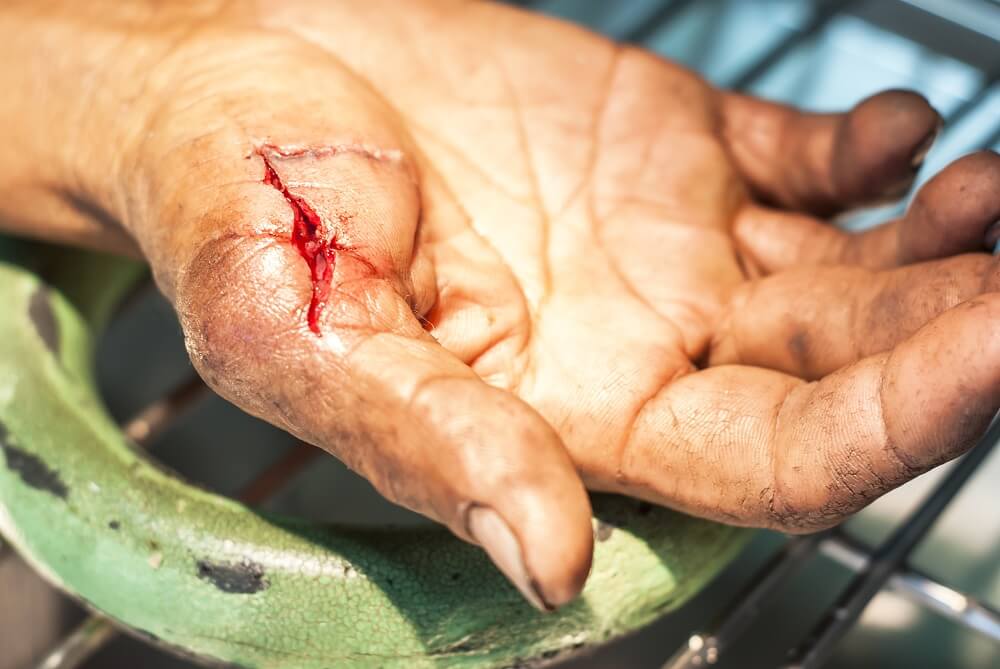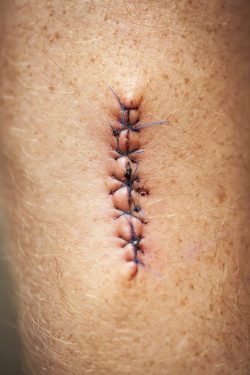
Laceration Repair
Cuts and lacerations are open wounds through the skin that can happen anytime and are often unexpected. Lacerations are frequently caused by sharp instruments or blunt force and we may wonder if the injury needs to be seen by a doctor.
FIRST AID
When a cut or laceration takes place, the following first aid steps should be followed.
- Stop the Bleeding by applying direct pressure on the wound.
- Clean the wound and surrounding area with warm water and gentle soap.
- If the wound is not dirty or gaping, apply an antibiotic ointment. If it is suspected that stitches may be necessary, DO NOT apply an antibiotic until after Dr. Ward has seen the injury.
- Protect the area with a sterile bandage placed on the wound.
There are a few variables when it comes to common cuts and lacerations that will serve as a guide to know when to have it looked at by Dr. Ward.
WHEN DO I NEED TO SEE DR WARD?
The area of the body where the injury occurred and the severity of the laceration will determine when it should be seen by Dr. Ward. When in doubt, call our office right away and if the wound is severe, like situations where spirting blood is present, call 911 or go to the emergency room immediately.
Lacerations with the following severity should be seen by Dr. Ward to see if stitches are necessary.
- Wounds that bleed longer than 15 minutes with direct pressure
- Wounds that are more than ¼ inch deep or more than ¾ inch long
- Wounds that have jagged edges
- Wounds that expose internal tissues like fat, muscle, or bone
- Wounds over a joint
- Wounds on the hands, fingers, feet or toes
- Wounds on the face, lips, or where scaring may be unsightly
- Wounds on the eyelids
Other situations not relating to the wound itself that warrant a call to Dr. Ward include:
- If the person hasn’t had a tetanus shot within the last 5 years.
- If the wound causes increased pain and swelling
- If there is redness or red streaks leading from the cut
- If a fever starts and persists after the accident
- If the skin near the cut is cold, pale or changes color
- If tingling, numbness or weakness near the laceration is experienced
- If there is pus draining from the cut
WHEN STITCHES ARE NECESSARY
Deep wounds that require stitches have a higher risk of infection and should be closed within 6 hours from the time of injury.

Dr. Ward may choose to close the wound with sutures (stitches), staples, tape or skin adhesive. The method chosen will depend on the severity and location of the wound.
After the wound has been treated, antibiotics may be applied and then covered with a nonstick bandage. Dr. Ward will provide instructions for continual care for the wound. The wound will need to stay dry for 24 to 48 hours after which it can be gently washed with mild soap without submerging the wound.
STITCH OR STAPLE REMOVAL
Dr. Ward will determine when the stitches or staples should be removed but the standard timeframe for removal is:
Location Time for RemovalFace 3 – 5 DaysHands, Arms 5 -10 DaysHigh Tension Areas (Joints) 8 -14 DaysFeet, Legs, chest, abdomen, and back 7 -14 Days
HEALING TAKES TIME
It takes time for wounds to heal so it is important for patients to be patient! As the wound is continually cared for, make sure to follow the instructions provided by Dr. Ward. Activities should be avoided that put pressure on the wound, even with stitches.
Activities like swimming in a lake or soaking in a hot tub should be avoided as bacteria may be present. The wound should be carefully cleaned and antibiotic ointments should be applied as instructed to reduce the chance of infection.
